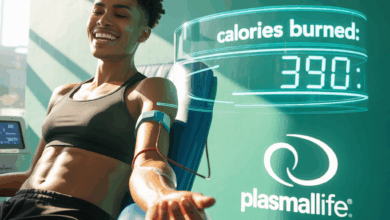How Many Calories Does Reading Burn

Ever wondered whether those cozy evenings with a book actually help your fitness goals — even a little? Picture this: you curl up on the couch with a novel after dinner and ask, “how many calories does reading burn?” It’s a tempting thought that quiet hobbies might chip away at calories, and the answer is more interesting (and more useful) than you might expect.
What reading actually burns: the science behind it
Reading is a sedentary, low-intensity activity. When we talk about calories burned while doing everyday tasks, we use a unit called the MET (metabolic equivalent of task). Most forms of sitting quietly — including reading — typically register around 1.2 to 1.5 METs. That’s only slightly higher than sleeping or resting, which explains the modest calorie burn.
How to estimate calories burned while reading
Use this simple formula (commonly used in exercise physiology):
- Calories per minute = (MET × 3.5 × body weight in kg) / 200
Example calculations using a conservative MET of 1.3:
- Person weighing 60 kg: ≈ (1.3×3.5×60)/200 = 1.37 calories/min → ~41 calories in 30 minutes
- Person weighing 70 kg: ≈ 1.59 calories/min → ~48 calories in 30 minutes
- Person weighing 90 kg: ≈ 2.05 calories/min → ~62 calories in 30 minutes
So yes — reading burns calories, but in small amounts. A 30–60 minute reading session typically burns somewhere between 40 and 120 calories depending on your weight and exact activity level.
Why reading burns calories (and why it’s limited)
Your body is always burning energy to keep you alive — breathing, circulating blood, and maintaining body temperature. Reading adds a tiny extra demand above resting metabolism, mostly from brain activity and minimal postural muscles when you sit and hold a book or device. It’s beneficial for mental health and stress reduction, but not a replacement for cardio or strength training if your goal is significant calorie burn or fat loss.
Creative ways to increase calorie burn while enjoying books
If you want to pair reading with a little extra movement without sacrificing the pleasure of your book, try these practical options.
1. Walk-and-listen
- Swap print books for audiobooks and take a brisk 20–40 minute walk. Walking at 3–4 mph burns roughly 150–250 calories per half hour depending on pace and weight.
- This is an easy way to boost your daily calorie expenditure while enjoying long-form content.
2. Stand or use a treadmill desk
- Standing burns slightly more than sitting. Use a standing desk or prop your book on a high table for 30–60 minute sessions.
- Combine standing with light pacing or a slow treadmill walk to further increase energy use.
3. Micro-workout breaks
- Use the Pomodoro technique: 25 minutes reading, then 5 minutes of exercises — bodyweight squats, push-ups, or a quick yoga flow.
- Short bursts of effort throughout the day add up and spike your metabolic rate more than sedentary time alone.
4. Isometric holds while reading
- Try seated core bracing, glute squeezes, or wall sits while you read a chapter. These burn extra calories and strengthen muscles without disturbing your focus.
Real-world examples: a day of reading vs. a day of active choices
Scenario A — Leisure reading: 60 minutes of sitting reading for a 70 kg person → ~96 calories. Enjoyable and relaxing, but modest in impact.
Scenario B — Active reading day: 30 minutes of brisk walking with an audiobook (≈150 calories) + two 10-minute micro-workouts (≈60–80 calories) + 30 minutes standing reading (≈20–30 calories) → total ≈230–260 calories. That’s a clear difference and still totally realistic for a busy schedule.
Fitness tips and healthy lifestyle advice beyond counting tiny activities
Reading can be part of a healthy, balanced lifestyle. Here are evidence-based tips to combine mental wellbeing and physical fitness:
- Prioritize strength training 2–3 times per week to raise resting metabolic rate and preserve lean mass.
- Blend passive leisure (reading) with active leisure (hiking, walking, or dancing) across the week.
- Use structured plans for results — check a few sample workout routines to create efficient sessions that fit your schedule.
- Support recovery and energy with solid nutrition — browse practical nutrition guides for meal timing and portion ideas.
- Reduce prolonged sitting by breaking reading time into blocks and taking movement breaks; small habits add up.
Practical workout variations to complement a reading lifestyle
If you love books and also want to improve fitness, try these quick weekly patterns:
- Monday: 30-minute strength session (full-body) + 20-minute walk while listening to a podcast or audiobook.
- Wednesday: 25-minute HIIT (20–30 minutes) + 15 minutes of mobility/stretching while reading.
- Saturday: Long outdoor read — take a blanket and walk to a park; alternate reading with 5-minute brisk walks every 20 minutes.
How many calories does reading burn — final summary
Short answer: reading burns a small number of calories — roughly 1–2 calories per minute for most people. Over an hour that’s typically 40–120 calories depending on body weight and posture. If your goal is to lose weight or significantly increase calorie expenditure, pairing reading with walking, standing, or brief exercise bursts is a smarter strategy than relying on reading alone.
Frequently Asked Questions
Reading alone provides minimal calorie burn and won’t drive substantial weight loss. However, it supports mental health (reducing stress-related eating) and pairs well with active habits like walking with audiobooks.
Standing burns slightly more calories than sitting — enough to help if you stack it across hours. For meaningful effects, combine standing with light movement or micromobility breaks.
Use audiobooks for walking or cycling, schedule short exercise breaks during reading sessions, or perform low-intensity movements (isometrics, stretches) while you read. These strategies preserve reading enjoyment while boosting daily activity.
Conclusion — make reading part of a balanced active lifestyle
So, how many calories does reading burn? Not a lot by itself — but reading is a low-impact, stress-reducing habit that fits beautifully into a holistic wellness plan. Combine the joy of books with small, consistent movement habits: swap some reading for audiobooks on walks, use standing sessions, and pepper in five-minute workouts. Want a simple plan to make it happen? Check out our wellness tips and start pairing your next chapter with a movement habit today.
Ready to make small changes that add up? Try a 7-day challenge: 20 minutes of walking with an audiobook each day plus two 5-minute movement breaks during reading time. Track how you feel, and come back to adjust the routine.





